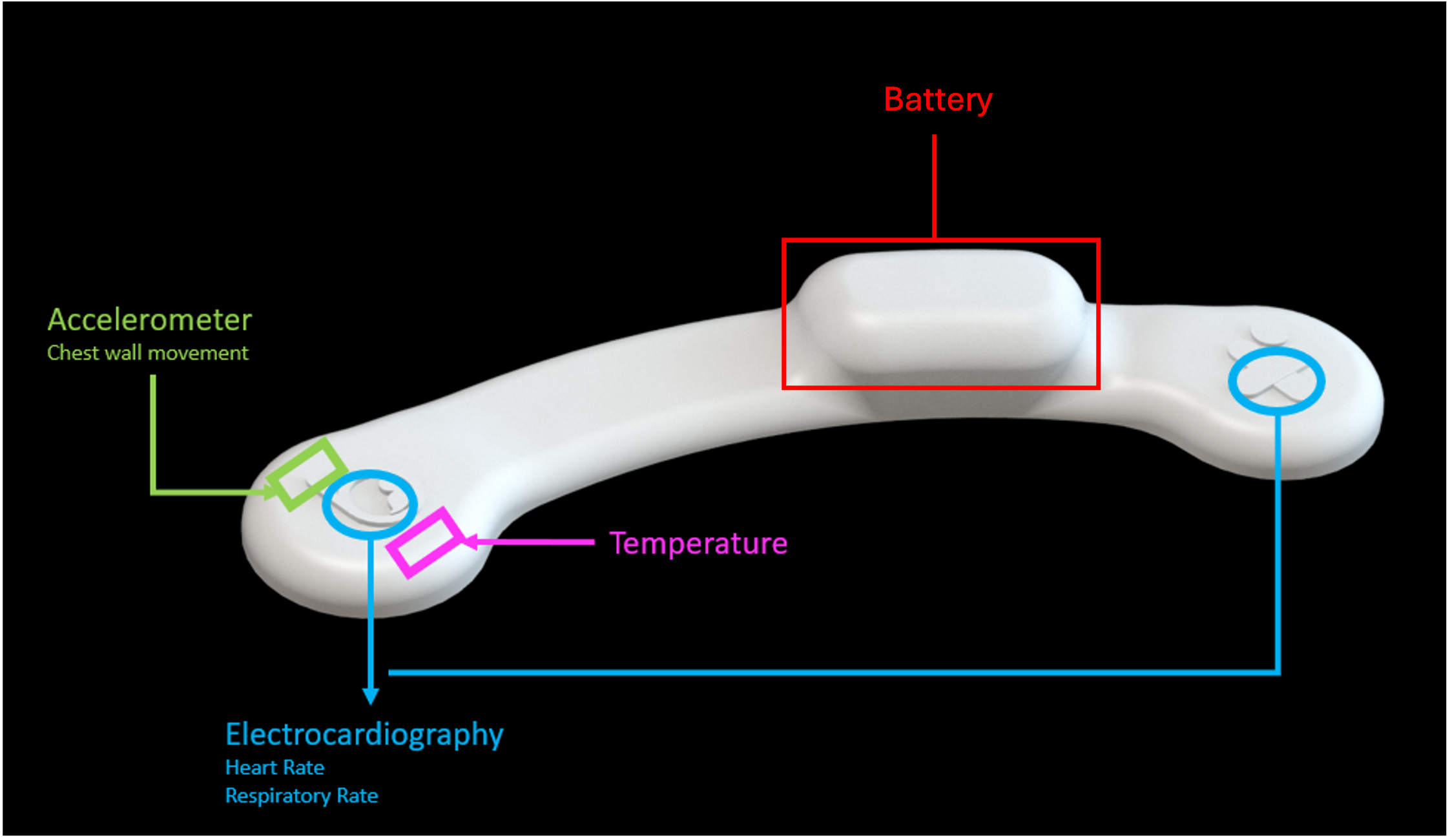Neonatal General 4: Novel Technology and Therapies
Session: Neonatal General 4: Novel Technology and Therapies
806 - Accuracy of a Neonatal Wireless Skin Sensor for Heart Rate Monitoring in the Neonatal Intensive Care Unit
Friday, April 25, 2025
5:30pm - 7:45pm HST
Publication Number: 806.3634
Eva B. Senechal, McGill University Faculty of Medicine and Health Sciences, Montreal, PQ, Canada; Daniel J. Radeschi, McGill University Faculty of Medicine and Health Sciences, Pointe Claire, PQ, Canada; Emily Jeanne, McGill University Faculty of Medicine and Health Sciences, Montreal, PQ, Canada; Vivian M.G.O. Azevedo, Universidade Federal de Uberlândia, Uberlandia, Minas Gerais, Brazil; Wissam Shalish, McGill University Faculty of Medicine and Health Sciences, Montreal, PQ, Canada; Robert E. Kearney, McGill University Faculty of Medicine and Health Sciences, Montreal, PQ, Canada; Guilherme Sant'Anna, McGill University, Montreal, PQ, Canada

Eva B. Senechal, BSc. (she/her/hers)
PhD. Candidate
McGill University Faculty of Medicine and Health Sciences
Montreal, Quebec, Canada
Presenting Author(s)
Background: In the neonatal intensive care unit (NICU), heart rate (HR) monitoring typically relies on wired sensors connected to bedside monitors by cables. This can lead to tangling of the wires, makes nursing care more complex, and may interfere with parental bonding. A new wireless skin sensor was specifically developed for neonatal use (Figure 1).
Objective: To evaluate the accuracy of a new wireless sensor for HR monitoring with reference to the current standard of care in the NICU.
Design/Methods: NICU patients were enrolled after parental consent was obtained. HR was monitored for 8h/day, on four consecutive days, using the wireless sensor (Anne Arc, Sibel®, USA) and a standard-of-care wired system (Philips Intellivue MX450, Philips, Netherlands) with Neotrode ECG leads (Neotrode, ConMed, USA). Synchronized vital sign data from both systems were recorded using a Biosensor Data Aggregation and Synchronization system developed for the study. Performance of the wireless sensor was determined by assessment of the coverage – the fraction of recording time for which vital sign values were available. When HR signals from both signals were available, accuracy was determined for sample-to-sample agreement by computing bias, 95% limits of agreement (LoA), and variance accounted for (VAF) (Figure 2). Additionally, a modified Clarke-Error Grid was used to assess the clinical implications of the HR agreement between the systems (Figure 3).
Results: A total of 26 patients provided 715.7 hours of data recordings for analysis. The median postmenstrual age and current weight were 36.8 weeks (IQR: 33.8 – 38.7) and 2295 grams (IQR: 1702 – 2907). The median coverage for the wired and wireless systems was 99% (IQR:98 -100) and 91% (IQR:75-97) respectively. For the periods where HR was available from both systems (597 hours), a median bias of 0 with 95% LoA=+/- 5 bpm, and VAF of 95.1% (IQR=90.61,97.28) were noted. The Clarke error grid using over 2 million data points for HR showed that 98.3% of the data lied in Zone A, indicating the HR wireless values were within 10% of the wired values, and yielding the same clinical interpretation (Figure 3).
Conclusion(s): A new wireless skin sensor for neonatal heart rate monitoring demonstrated high accuracy and clinical reliability compared to standard wired systems. Ongoing work is evaluating gaps in coverage and safety.
Figure 1. New wireless skin sensor
 Legend: Diagram of the wireless skin sensors indicating the location of various sensors.
Legend: Diagram of the wireless skin sensors indicating the location of various sensors. Figure 2. Bland Altman and Regression Analysis
.png) Legend: (A) Linear regression of one patient with the Pearson correlation coefficient, scale ratio (slope), and variance accounted for (vaf);(B) Bland Altman analysis for the same patient with the bias, 95% limits of agreement (LoA).
Legend: (A) Linear regression of one patient with the Pearson correlation coefficient, scale ratio (slope), and variance accounted for (vaf);(B) Bland Altman analysis for the same patient with the bias, 95% limits of agreement (LoA).Figure 3. Clarke Error Grid
.png) Legend: Clarke Error Grid with legend providing % of available data points in each zone. Zone definitions are provided in table below gird. Bradycardia defined as bpm <100, and high heart and Tachycardia defined as bpm > 180
Legend: Clarke Error Grid with legend providing % of available data points in each zone. Zone definitions are provided in table below gird. Bradycardia defined as bpm <100, and high heart and Tachycardia defined as bpm > 180 Figure 1. New wireless skin sensor
 Legend: Diagram of the wireless skin sensors indicating the location of various sensors.
Legend: Diagram of the wireless skin sensors indicating the location of various sensors. Figure 2. Bland Altman and Regression Analysis
.png) Legend: (A) Linear regression of one patient with the Pearson correlation coefficient, scale ratio (slope), and variance accounted for (vaf);(B) Bland Altman analysis for the same patient with the bias, 95% limits of agreement (LoA).
Legend: (A) Linear regression of one patient with the Pearson correlation coefficient, scale ratio (slope), and variance accounted for (vaf);(B) Bland Altman analysis for the same patient with the bias, 95% limits of agreement (LoA).Figure 3. Clarke Error Grid
.png) Legend: Clarke Error Grid with legend providing % of available data points in each zone. Zone definitions are provided in table below gird. Bradycardia defined as bpm <100, and high heart and Tachycardia defined as bpm > 180
Legend: Clarke Error Grid with legend providing % of available data points in each zone. Zone definitions are provided in table below gird. Bradycardia defined as bpm <100, and high heart and Tachycardia defined as bpm > 180 
